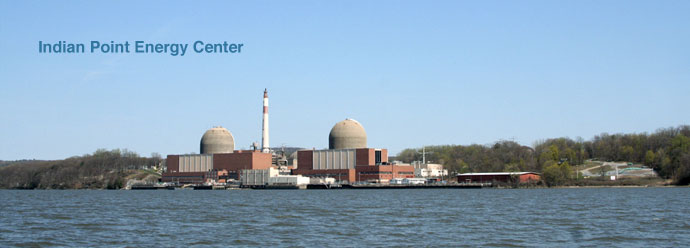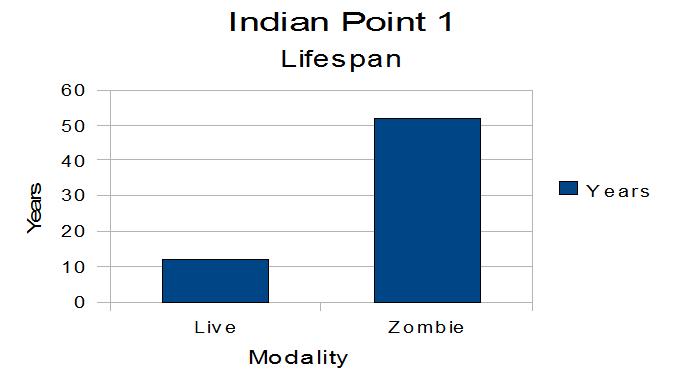Bucolic? Pastoral? Looks that way, but looks can be deceiving. First of all, there’s Indian Point 1. Then there’s the water issue. Other issues are waste and national security.
Indian Point 1
- Brought online in August, 1962.
- Shutdown in October, 1974.
- Spent fuel is stored on site.
- Scheduled to be closed in 2026.
- Operated 13 years.
- “Zombie” 52 years.
Talk about externalities! “Zombie” since ’74 and scheduled as such for another 25 years, total of 52 years. NRC. What does it cost to maintain and manage as a “zombie?” And who pays? The owners or the taxpayers? And did the plant produce so much power in the 12 years of operation that it will make a profit after 52 years of being managed and serviced?
Indian Point 2
- Rated Thermal Power: 3216 MW
- Net Electrical Rating: 1032 MW
- Water Requirements: 840,000 gallons per minute
Indian Point 3
- Rated Thermal Power: 3188 MW
- Net Electrical Rating: 1051MW
- Water Requirements: 840,000 gallons per minute
(source: Entergy / Indian Point website)
Summary – Indian Point is a 2.083 GW complex. Replacing it with new nuclear would cost about $12 to $18 billion, plus the cost of fuel, security, and the costs of interest during the 8 to 10 years of construction. Replacing it with solar would require about 2 million PV solar panels, at a cost of $8 to $12 billion, or 570 wind turbines at a cost of $4 to $6 billion. 2.0 gw of wind and solar do not require 1,680,000 gallons per minute of cooling water, or even 1.0 gallons per minute. Solar and wind do not require fuel and do not produce waste. Nor do they present national security challenges.
Energy Alternatives
- 2 Gigawatts
- Modality Nuclear Solar Wind
- Cost (billions) $12 to $18 $8 to $12 $4 to $6
- Fuel Yes No No
- Waste Yes No No
- Security Hole Huge No No

